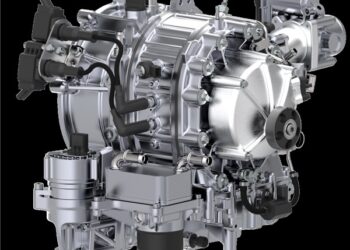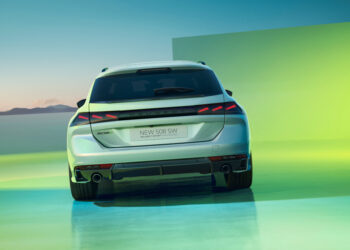Renault is raising the stakes in the race to a carbon-neutral future with its bold new concept car, the Emblème, a futuristic fusion of hydrogen and electric power. The French auto giant, aiming for carbon neutrality by 2040 in Europe and globally by 2050, is doubling down on this hybrid powertrain technology, determined to show the world that hydrogen still has a place in the future of sustainable driving.
The Renault Emblème is a striking example of the automaker’s ambition. Billed as a hydrogen-electric shooting brake, this sleek wagon is as aerodynamic as it is futuristic. With a jaw-dropping drag coefficient of just 0.25, the Emblème boasts a design radically different from Renault’s current production models. It’s also massive for a “compact” car, stretching 189 inches in length yet standing only 59.9 inches tall, giving it a low, sporty profile that hints at both performance and efficiency.
But the Emblème’s real showstopper is under the hood—or rather, throughout its body. Renault has integrated a 40-kWh nickel-manganese-cobalt (NMC) battery pack with a hydrogen fuel cell system that offers a range of up to 621 miles (1,000 kilometers), allowing drivers to “recharge” at hydrogen refueling stations in just under five minutes. The hybrid system cleverly switches between hydrogen and battery power, making it as convenient as an internal combustion engine (ICE) vehicle, but with a significantly lower environmental footprint.
The car’s hydrogen tank holds 2.8 kilograms of hydrogen, enough for about 217 miles (350 kilometers), while the battery alone can cover around 187 miles (300 kilometers), adding up to impressive flexibility for different driving conditions. In the city, the Emblème operates primarily on battery power, keeping emissions at a minimum, while the hydrogen fuel cell kicks in on longer trips to extend range and maintain convenience.
Powering the rear wheels is a 215-horsepower wound-rotor electric motor, which, impressively, doesn’t rely on rare earth materials, aligning with Renault’s mission of eco-friendly production. The company’s engineers have slashed every possible kilogram from the vehicle, resulting in a curb weight of 3,858 pounds (1,750 kilograms), which is lighter than many traditional hybrids or EVs, further enhancing its efficiency.
Renault claims that the Emblème reduces emissions by 90% over its lifetime compared to similar-sized cars, representing a significant leap forward in sustainable vehicle design. The automaker plans to showcase the Emblème to the world at the 2024 Paris Motor Show from October 14-20, where the interior will finally be revealed, giving a full view of this groundbreaking vehicle.
The Emblème isn’t just a concept car—it’s Renault’s bold statement that the future of green mobility can be fast, flexible, and fueled by more than just electricity. As the world races toward sustainability, Renault is positioning itself as a key player in the transition, not just with EVs but with hydrogen power at the forefront.










